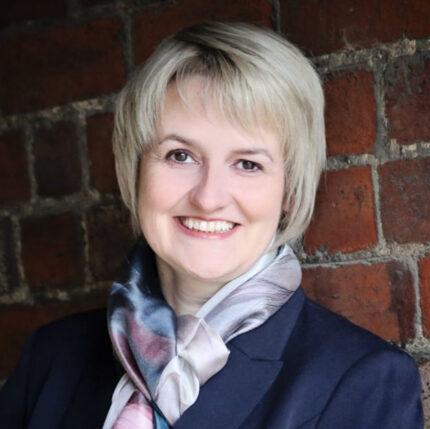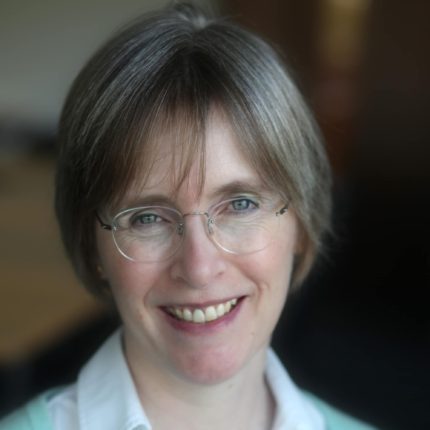Inclusive meetings
Josie Fraser
Online participation deservedly gets credit for more diverse voices in meetings – but works best when everyone is online.
Pre-pandemic, I had a meeting with a group of seven senior sector colleagues from a range of UK universities on the Open University campus. One of the group was overseas, at her institution’s TNE site, and was dialling in.
Everyone was impressed that the OU meeting room had a device in the centre with mirrors/cameras/speakers/microphones, that not only meant the whole room of us around the table was shown to our overseas colleague online, but as people in the physical meeting room spoke up, she was also able to see a closer-up picture – the Polycom automatically zooms in on the speaker. The meeting was great, and even our jet lagged overseas colleague enjoyed it
I explained that the OU had invested in the technology in many of our meeting rooms, because we so often had meetings involving colleagues in our Nations headquarters (Edinburgh, Belfast, Cardiff, Dublin), or home working colleagues, or those on other sites, or student reps who are “at a distance”. If you had asked I’d have said that the OU was very good at involving remote participants.
Through various lockdowns (where everyone is a remote participant), we’ve come to realise that actually, most of the time previous to the pandemic, the reality was that the person or people who were “online” when the majority of meeting participants were “live”, did not have the best (or even a close equivalent) experience.
It works great in meetings like the one I mentioned, with seven participants and one remote, but in a governance committee with 15 people physically present and two dialling in? It takes a good chair, and confidence to butt in as the remote participant.
Post-pandemic, we need to think carefully about that, and consider when we will meet physically. I’d argue that, if some participants must be online, we should consider all being online.
In the pandemic, we’re all online participants, and more voices are heard and more people participate. The chat allows people to show agreement or disagreement, without having to speak up; allows for minor points to be made, that perhaps people wouldn’t have felt important or major enough to speak up on; and with the “hands up” list – and all of us looking for clear audio/video in our various locations – there’s an obvious order of participation and people are less likely to be talked over – which more often happens to women than men in physically-present meetings.
The more human interactions with one another (certainly my dogs and children have made appearances at various key meetings), have humanised, or at least removed some formality, from lots of our interactions. Seeing people, rather than their roles, I suspect has made it easier for more people to feel comfortable to speak up; and the technical affordances have made it less intimidating to chip in without having to raise a hand to speak.
That inclusion can only improve the diversity of voices we hear in our meetings, and that diversity can only improve our decision making.
Better together
Felicity Mitchell
It’s trite to say that complaints are a gift – they are rarely a welcome surprise – but they are a learning opportunity. What can we learn from a year of Covid complaints that will contribute towards a better future?
At their heart, complaints are often about relationships, and good relationships are founded on good communication. When problems arise, it might take longer to find a way forward and make decisions when you invest time discussing the issues at an early stage (and it’s undoubtedly more challenging to do this when under pressure).
But the investment is invaluable. When students and staff members work together to establish what is really important, when both are honest and realistic about what is possible and look for ways forward, it helps to create a sense of ownership and acceptance and makes positive outcomes more likely.
It’s also important to listen out for other voices in the conversation. If there was ever any doubt, the pandemic has shown us that one size really doesn’t fit all and this is particularly the case for disabled students.
The effects of the move to online learning has illustrated this: some have benefited from online delivery, for example through being able to learn more flexibly, while others found it made existing barriers even worse. Planning with this in mind, and continuing conversations to understand different students’ experiences, will help to build a more inclusive higher education sector for the future.
As an organisation we’ve been working on kindness. Part of this is about taking more time to listen, and responding more flexibly to the diverse range of needs we see. Sometimes it is as simple as opening communications with, “I hope you are doing OK.”
It’s been encouraging to see how this approach has helped to establish a better relationship. On the receiving end of every message or phone call is another person – not an institution or a problem – and remembering that can ease the way.
Release the risk register
Alan Sutherland
There is a saying in the world of DIY, to “measure twice, cut once.” Unfortunately for many universities this has evolved into “measure five times, dispute the unit of measurement, forget why you are cutting it, buy a new ruler.”
Tight margins have a crippling effect on innovation in universities. Nobody wants to be an outlier for the wrong reasons, and it feels like everyone is on a shared journey across a recruitment tightrope with the government holding a large pointy “low quality courses” stick underneath waiting for someone to fall.
There is a theory that if you decrease risk, you increase danger. If people don’t feel scared, then they don’t take caution. This is best seen at a pedestrian crossing, where everyone has blind faith that all vehicles will stop when they see a red light, and they forget they are stepping out in front of a two ton car which may or may not stop.
Over the last year, I have seen many organisations with highly developed risk registers and strategic plans in a near state of collapse within weeks of the first lockdown. The illusion of control was created by the reassurance of a spreadsheet whose cells were lit up in green, telling the reader everything will be fine.
So, set yourself free from strategic plans, and release the risk register. Focus on the destination, a great student experience and life changing research – that is what matters.
How we get there will be different for everyone, and of course things can go wrong, but over the last year we have seen huge leaps in creative thinking across the sector as universities plunged feet first into a new world. It’s time to continue to be brave and fearless. It’s time to be excited and be exciting.
At Wonkfest Digital on 9-10 June we’ll be thinking through how universities can Build Back Higher after the Covid-19 pandemic. Find out more about Wonkfest Digital and get your ticket here.
















There is a saying in the world of DIY, to “measure twice, cut once.” Unfortunately for many universities this has evolved into “measure five times, dispute the unit of measurement, forget why you are cutting it, buy a new ruler.” – wonderfully put!
I agree, that made me laugh out loud too! I might “borrow” that saying! Great article